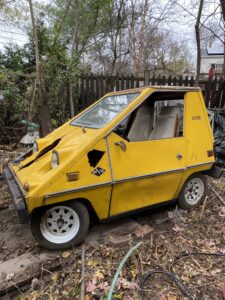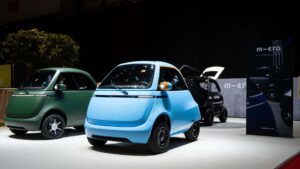Europe’s Love for Small Cars
Europe’s Love for Small Cars

There is almost always something new or exciting on my commute to or from school. Somedays it can be a random event happening in the MarketPlatz, other times it’s deviating from my regular route to explore a new part of Bonn, and sometimes it’s getting to see a Twizy and not just any Twizy, a police Twizy. For those uniformed and are not into weird cars and specifically Microcars. A Twizy is a small electric two-seater car that would fit in better with some futuristic society or on a golf course. They are made by Renault and are unfortunately not sold in the US.
On average, cars in Europe are smaller in every dimension compared to the American market. With the Smart Car being a regular sight and Minis being considered a “normal” size. This is due to numerous reasons, from the small and tight historic streets, higher gas prices near double the average American cost per gallon, limited parking, higher emission standards, and more. This has become ingrained in each respective culture.
Although some effort has been made to bring these small passenger vehicles, particularly electric powered, to the United States. But beyond the Smart car (which is no longer sold as of 2019), most of these vehicles like the Twizy are not legal in the US due to not meeting the extensive regulations under the Federal Motor Vehicle Safety Standards unless limited to only 25 mph which would classify them as a low speed vehicle (LSV) and limits their use and practicality given the large amount of high speed roads.

Some motorists have taken to importing European and Japanese microcars, but the cars must be over 25 years old which limits the practicality and leads to most of the cars being imported by enthusiasts, not average consumers. Recently, Kei cars and trucks, known for their compact size, from Japan have become increasingly popular, but many states have attempted to limit their use and prevent them from being registered or even retroactively unregistering them.

In the future, the US should take more inspiration from European car culture, particularly in cities. It would allow for reduced parking, more walkable cities, and a cleaner environment with less emissions from cars. Swedish car manufacturer Micro’s Microlino, a modern electric recreation of the iconic BMW Isetta, has attempted to enter into the US market with their Lite variant as well as Citroen with the Ami, but both are still limited by the LSV designation. In the 70s during the oil crisis some small electric cars were built and sold, such as the American Sebring-Vanguard Citicar and Italian Zagato Elcar, but neither took off with only slightly over 5000 sold between them. Maybe one of these newer car makers will be able to break through the US market with a smaller car as other traditional automakers continue to remove their smallest options from the US market.
-Bram H.
References:
The Economist Newspaper. (2023, June 21). A farewell to small cars, the industrial icons that put Europe on Wheels. The Economist. https://www.economist.com/europe/2023/06/21/a-farewell-to-small-cars-the-industrial-icons-that-put-europe-on-wheels
Spray, A. (2021, April 15). 8 reasons why Europeans like small cars. Hot Cars. https://www.hotcars.com/why-europeans-like-small-cars/
Visram, T. (2023, February 21). Tiny cars are all the rage in European cities. Fast Company. https://www.fastcompany.com/90852521/tiny-cars-european-cities-could-they-work-in-america
